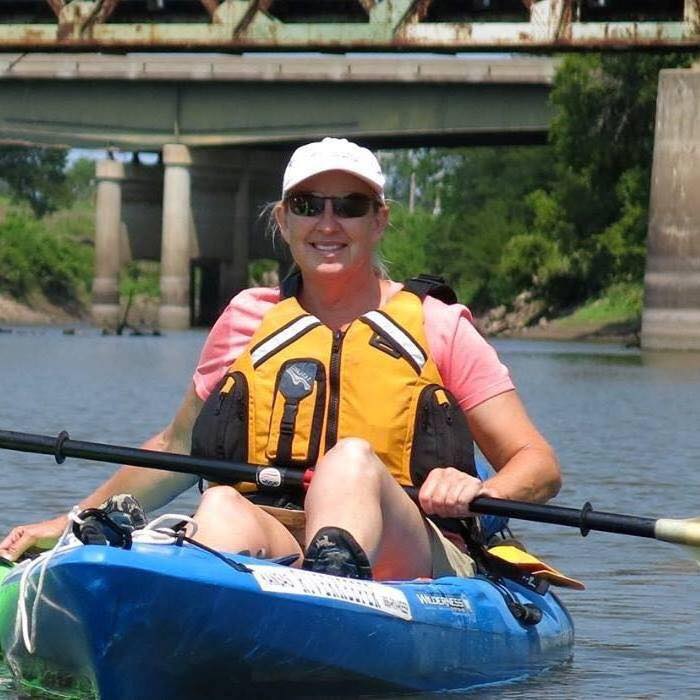The Kansas River offers opportunities for fishing from the bank or a boat; in calm water or fast water; in the brush or on the sand. Ending a day on the river with a fresh fish dinner cooked over a sandbar campfire is highly encouraged!
Kansas law requires a fishing license for most fisherfolk, and establishes limits for harvesting fish. After you get your license, but before you reach your fishing spot, there are a few things that you should keep in mind. The Kansas River is a working river, and careless use has left us some challenges:
- The Kansas Department of Health and Environment monitors the river for Polychlorinated Biphenyls (PCBs), mercury and other contaminants. Each year they issue Advisories about eating some fish from some sections of the river.
- Asian Carp are an invasive species prevalent in the lower portion (Lawrence to Kansas City) of the river. They crowd the native fish stocks, as well as create a hazard to power boat operators.
- Zebra mussels are invasive throughout the river and several reservoirs. Carefully and thoroughly clean your boat and gear when moving from one water body to another.
- Blue-green algae in local reservoirs that feed into the river.
The Kansas Department of Wildlife, Parks and Tourism (KDWPT) offers fishing brochures, and guides to the parks and reservoirs in Kansas. County Game Wardens can also answer location-specific questions about fishing and hunting along the Kansas River.
Site Specific Advisory on the Kansas River
View Fish Consumption Advisories in a larger map. Click here for help with our maps.
For bottom-feeding fish and catfishes taken from the Kansas River between Lawrence (below Bowersock Dam) and Eudora at the confluence of the Wakarusa River (Douglas and Leavenworth counties), Kansas recommends restricting consumption due to the levels of polychlorinated biphenyls (PCBs) detected in samples.

 Paddle safely! Use the links below to quickly access information that impacts river conditions.
Paddle safely! Use the links below to quickly access information that impacts river conditions.
